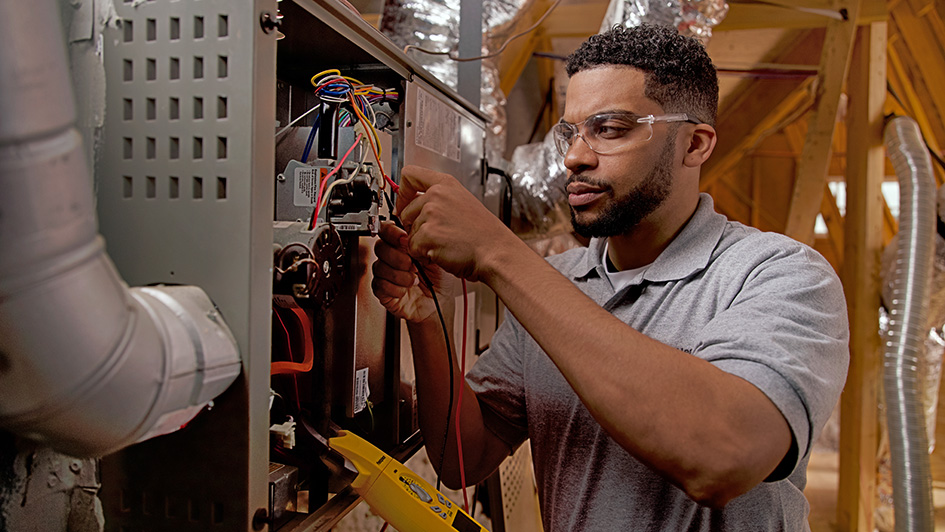
A furnace is usually a background player in your home, ensuring you're warm in the cold winter months. It frequently doesn’t get noticed until something breaks down.
One root cause may be that your furnace has a cracked heat exchanger. It’s a potentially dangerous issue, so it’s important to learn the signs of a cracked heat exchanger and what to do if you believe that may be the problem.
What Is a Heat Exchanger in a Furnace?
A heat exchanger helps move heat from the combustion chamber inside your furnace to the air that circulates through the system. It generally handles this with coils or tubes that heat the air while acting as a barrier to keep gas produced in the combustion chamber, called flue gasses, from getting out into your home.
Is a Cracked Heat Exchanger Dangerous?
Because of its central role, it isn't surprising that a cracked heat exchanger can be very dangerous. A crack in the heat exchanger can enable dangerous gasses – including carbon monoxide, which can be lethal – to circulate throughout your home.
For obvious reasons, never run your heating if you think it has a cracked heat exchanger, as doing so could make your entire family sick. Contact an HVAC professional as soon as possible if you believe your heater has a cracked heat exchanger that should be repaired.
Four Warning Signs of a Cracked Heat Exchanger:
- Furnace switches off: A cracked heat exchanger may cause your furnace to shut off.
- Unusual Smells: If the air coming out of your furnace has a powerful chemical smell, it could be evidence gas is leaking through cracks in your heat exchanger. These gasses, which can smell like formaldehyde, are a common warning sign.
- Carbon monoxide alarm goes off or you recognize symptoms of poisoning: If a cracked heat exchanger is emitting carbon monoxide into your home, your carbon monoxide alarm may go off or household members may experience signs of carbon monoxide poisoning. Side effects include headaches, dizziness, weakness, nausea, vomiting or feeling sleepy. If your alarm goes off or you feel unusually tired, exit the home immediately and then call for help.
- Soot: If you see black sooty buildup around the exterior of your furnace, it’s an indication something may be seriously wrong.
What to Do if a Furnace Heat Exchanger is Cracked
If you believe your furnace has a cracked heat exchanger, call a professional experienced in furnace installation Saint Louis right away so they can inspect your system and, if needed, start a furnace heat exchanger replacement. Costs will differ depending on the situation, but estimates often hover around $1,000 to $3,000.
Fortunately, the good news is that heat exchangers are generally included in the warranty. You should check the warranty paperwork on your furnace, because while the warranty might not cover the entire cost of repairs, it could significantly lower your bill.
How to Avoid a Cracked Heat Exchanger in Your Home
One of the most convenient ways to minimize the risk of problems in your furnace overall is through routine furnace maintenance. Furnaces provide the best possible return on investment when they work efficiently. Calling a skilled professional to examine your furnace for old parts, dirty filters and other potential problems can keep you from getting a big bill later on.
It’s also beneficial to inspect your furnace filters every few months – it’s ideal some filters be swapped out every 90 days or sooner if they are dirty or grimy. While the filters aren't a part of the heat exchanger itself, the strain of dragging air through a clogged filter makes the entire furnace work harder to do its job. And the harder your furnace works, the more strain pieces like the heat exchanger will experience.
